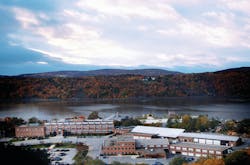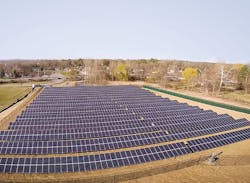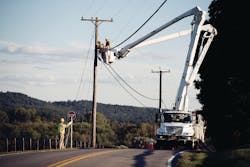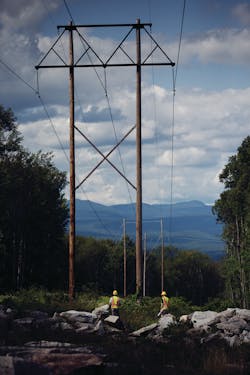The Quest for Sustainability with Distributed Energy
While the COVID-19 pandemic has shifted priorities for utilities globally, many providers remain committed to their long-term objectives in clean energy and sustainability. As revealed in Deloitte Touche Tohmatsu Ltd.’s 2020 Power and Utilities Industry Outlook: A Midyear Update report, the pandemic may even accelerate the sustainability movement as utilities realize the urgency to drive greater value for both their customers and their organizations.
As demand grows for clean energy such as solar power, utilities must find safe methods to connect differentiated sources of electricity — including photovoltaics, battery, and wind — to the grid in a way that helps them to manage and stabilize power levels as well as comply with state and local requests for more renewables. However, building a framework to support the use of distributed energy resources (DERs) requires a review of capabilities to ensure DER systems are deployed safely and efficiently — that is, with no unintentional islanding or backfeeding and at the lowest appropriate cost. There should be no service disruption to residential and commercial customers.
Central Hudson Gas & Electric Corp. has leveraged existing investments in distribution automation (DA) technology to help advance its DER applications. The utility’s solution more efficiently connects solar customers to the grid, and is a significant step toward a more sustainable future.
A Case Study
Alternative energy is a growing driver for Central Hudson to pursue innovation in its DA programs. Homes with rooftop solar panels and expansive, commercial solar farms are part of the utility’s 2600-sq mile (6734-sq km) service area between the suburbs of northern New York City, New York, U.S., and those in the state capital of Albany, New York. The unique landscape underlies the utility’s long-term vision and alignment with the state’s commitment to sustainability.
Central Hudson has revenue decoupling and deregulation, so different sources of generation have no effect on the utility’s revenue. Rather, its revenue comes solely from the delivery of electricity. The utility is committed to advancing its ability to accommodate renewable energy for customers. However, transitioning away from a traditional distribution model in a territory covering nearly 400,000 electric and natural gas customers is not as simple as flipping a switch. Technology has helped the utility to seize the opportunity for new grid controls while ensuring quality and reliability as demand evolves.
A New Generation
Central Hudson established its distributed generation program within the broader context of New York state’s energy plan to foster an innovative clean-energy economy. The program brought new possibilities and incentives to energy consumers but also introduced a few challenges. To support these new initiatives, the utility’s engineers and operators needed the right level of visibility and control over the evolving grid to ensure efficiency and reliability.
Central Hudson has a small engineering team and needed a solution to bring communications to its DA devices easily and affordably. The utility found a near off-the-shelf solution in a wireless communication platform it already had begun to implement from Sensus, a Xylem brand. Initially, the utility deployed the Sensus Remote Telemetry Module (RTM II) to monitor grid conditions and protect against outages. RTM II uses intelligent electronic devices (IEDs) placed strategically across the network to help monitor and control distribution assets. Central Hudson’s engineers were able to set up communications for individual assets in less than an hour, in some instances.
As a result, Central Hudson reduced its number of electric service interruptions by 10% with automatic load transfer (ALT) schemes activated as part of the system. The ALT schemes have been the source of Central Hudson’s reliability improvement, and they were in place before the RTM II units. However, having communications through these units has helped the utility to ensure they are on-line and operational without having to perform periodic field inspections.
Building off the success of its initial rollout of reclosers and other connected IEDs, Central Hudson decided to expand the DA solution to include monitoring and control of DERs. This strategy laid the foundation to grow the utility’s renewable energy transformation by accommodating assets for ongoing smart grid advancement.
Solar On The Grid
As solar farms grew in its rural northwest territory, Central Hudson recognized the potential for excessive grid backflow and overvoltage that could cause system damage. The utility wanted to protect infrastructure and mitigate potential issues in a simple, cost-effective way as more solar farms came on-line. Not wanting to start from scratch, the utility saw available connectivity and recognized the potential to build something using current resources.
Central Hudson’s engineering team designed a location-agnostic direct transfer trip (DTT) system that connects the interoperable RTM II to reclosers located at solar sites. The system autonomously isolates a DER when a condition exists that can lead to excessive reverse power flow or when overvoltage is detected. The system helps to ensure stability, no matter where an issue occurs on the grid.
One of the most appealing characteristics of the DTT system: It leverages a simple design that requires little hardware or investment for setup. Furthermore, setting up a new location solution for automation takes a matter of minutes. Central Hudson immediately recognized the potential for this solution to be launched on a large scale.
Acing The Test
The utility put its automated DTT system through two months of testing, during which the RTM II’s interoperability proved quick and conclusive. While the utility tested the setup extensively and dedicated eight hours to add each solar farm to the system, it actually took less than 20 minutes to complete. The module performed exactly as the utility envisioned, as confirmed by two live events over the critical summer months.
These events demonstrated the DTT system’s effectiveness and improved asset management as well as highlighted a continued focus on cybersecurity. Central Hudson used Sensus DA hardware like the T866 MicroRTU to integrate easily with the utility’s solution in a plug-and-play fashion. The platform-enabled one-way flow of communications further protects against data breaches, an important factor in a smart grid framework where applications will only grow more interconnected. The one-way flow occurs by connecting binary outputs from a relay connected to the energy management system to binary inputs on the T866. The T866 cannot send outputs through an input, and the substation relay cannot receive inputs through an output.
Sensible Solution
After successful testing, Central Hudson moved forward with a rollout of the DTT system in its northwest region. The solution has been installed now across five solar farms with sizes ranging from 2 MW to 5 MW. The team confirmed the interoperability, automation and configurability of the solution will make it easy to add more installations in the future.
Having seamless interoperability has enabled the utility to add new capabilities. It used to take weeks to hardwire a DTT system to connect a new commercial solar farm to Central Hudson’s system. Because the team is so familiar with the system, it now can complete the automation work in the time it takes to get a cup of coffee — 15 minutes or less.
Central Hudson’s engineers feel it is important to get the word out about the success they have had with their system and the simplicity it provides. Utilities across the U.S. are facing similar challenges — balancing state mandates to move toward more renewable energy while managing budget and operational challenges. Implementing a distributed generation program is a great first step to maximize technology investments while advancing clean energy. Like Central Hudson’s program, it requires sustainable technology that is both affordable and scalable.
Looking Ahead
Many utilities view DERs as instrumental to the future of grid management, especially as advancements in solar energy continue and energy storage becomes more viable in addressing peak demand. The clean-energy transition is poised for acceleration as utilities strategize beyond the pandemic.
For Central Hudson, New York state’s policy goals strongly recommend the accommodation of DERs as much as possible while keeping an eye on power quality issues to avoid any detrimental effects. Committed to advancing its ability to accommodate renewable energy for customers, the utility believes now is an ideal time to leverage existing assets and consider future technology investments to drive service and sustainability.
Acknowledgment
The authors would like to acknowledge Ryan Chatel, a senior product manager for distribution automation at Sensus, a Xylem brand, for his work with Central Hudson and contributions to this article.
About the Author
Ryan Yakush
Ryan Yakush is an engineer at Central Hudson Gas & Electric Corp.
Kevin Post
Kevin Post is a smart grid team leader at Central Hudson Gas & Electric Corp.




